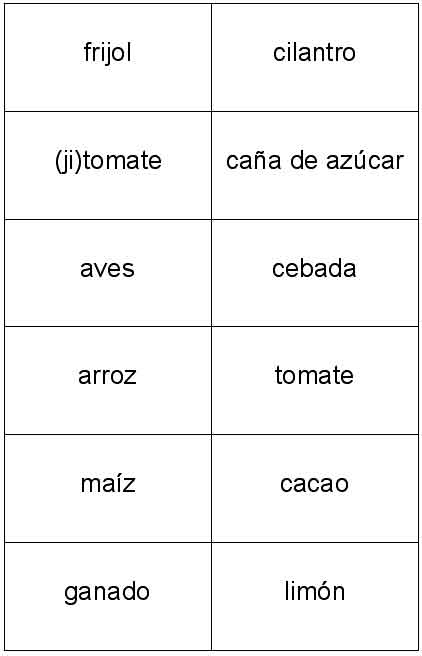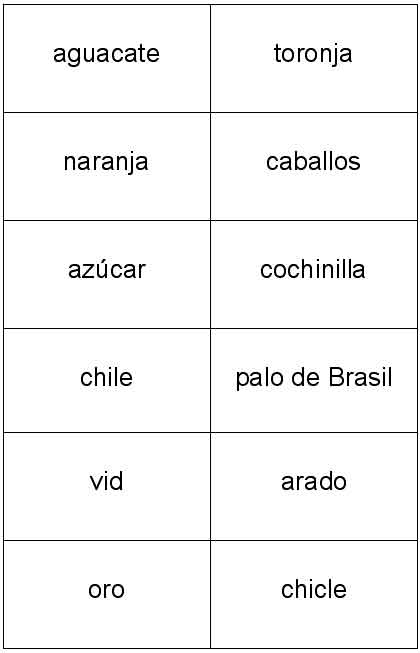
![]()
|
Title |
Intercambios de productos |
|
Unit/Activity No. |
Food History/Activity 4 |
|
Geographic Topic |
origin of food |
|
Language Topic |
food |
|
Language Function |
identify, ask information questions |
|
Language Standard |
1.1, 1.2, 3.1 |
|
Geography Standard |
10, 11, 16 |
| Step 1. | Copy a classroom set of Handout 1 and cut it apart. (Divide the number of students by 4 to get the correct number of copies.) |
| Step 2. | Distribute the different sections randomly, so that one fourth of the students have version A, one fourth have version B, etc. First, have students verify the meaning of the words on their list. Then, have them find a partner who has a different version of the handout. Students are to work one-on-one, asking questions and sharing their information in Spanish (information gap activity). Make sure they do not just copy from the partner’s sheet; they must ask and answer questions orally. |
| Step 3. | Once the pair has finished working together, they should find a new partner with a different set of information. Continue this process until the students have the information from versions A, B, C and D. |
| Step 4. | Copy enough sets of Handout 2 so each group of four has one set. Students should cut apart the vocabulary cards and place them in an envelope. Divide students into groups of four; within each group students will work with a partner so that each group has two teams of two students. |
| Step 5. | Students use the vocabulary words to play Password. Students work in pairs, alternating selecting a word from the envelope and trying to get their partners to guess the word they have, giving definitions, synonyms, antonyms, explanations, etc. in the target language, or using gestures. To avoid getting bogged down on a single word, the instructor can set a time limit for each word, or limit the number of explanations and guesses for each word. |
You may want to review the alphabet so that unfamiliar items can be spelled, if necessary.
If a student is unfamiliar with a vocabulary word, the teacher should provide a Spanish description for the individual. The student must then explain or draw a picture of the word if other students are also unfamiliar with the word.
The products mentioned in this activity will also appear in Activity 5, El mercantilismo y la nueva economía mundial. You may want to have students use the global map in that activity to locate the origin and movements of the products mentioned here.
Handout 1
Hay 25 productos o métodos agrícolas que España y Portugal recibieron de las Américas y 14 productos o métodos agrícolas que las Américas recibieron de España y Portugal. Tienes una lista parcial. Busca los otros hablando con tus compañeros de clase. No puedes copiar de la lista que tienen tus compañeros; tienes que preguntárselo para verificar y completar tu lista.

![]()
Hay 25 productos o métodos agrícolas que España y Portugal recibieron de las Américas y 14 productos o métodos agrícolas que las Américas recibieron de España y Portugal. Tienes una lista parcial. Busca los otros hablando con tus compañeros de clase. No puedes copiar de la lista que tienen tus compañeros; tienes que preguntárselo para verificar y completar tu lista.
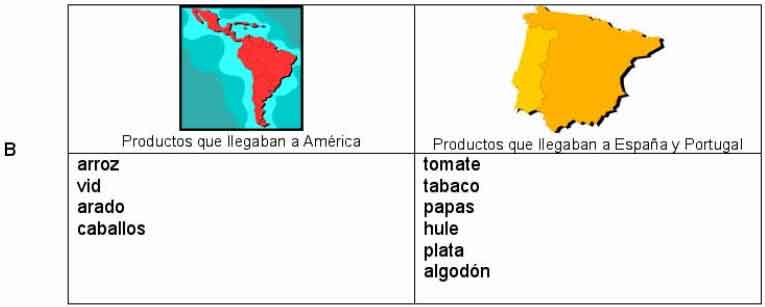
![]()
Hay 25 productos o métodos agrícolas que España y Portugal recibieron de las Américas y 14 productos o métodos agrícolas que las Américas recibieron de España y Portugal. Tienes una lista parcial. Busca los otros hablando con tus compañeros de clase. No puedes copiar de la lista que tienen tus compañeros; tienes que preguntárselo para verificar y completar tu lista.
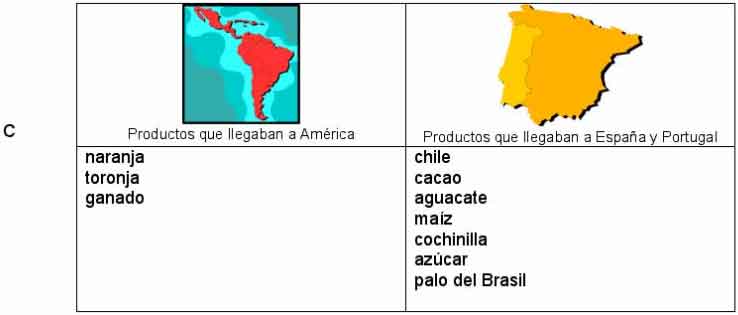
![]()
Hay 25 productos o métodos agrícolas que España y Portugal recibieron de las Américas y 14 productos o métodos agrícolas que las Américas recibieron de España y Portugal. Tienes una lista parcial. Busca los otros hablando con tus compañeros de clase. No puedes copiar de la lista que tienen tus compañeros; tienes que preguntárselo para verificar y completar tu lista.
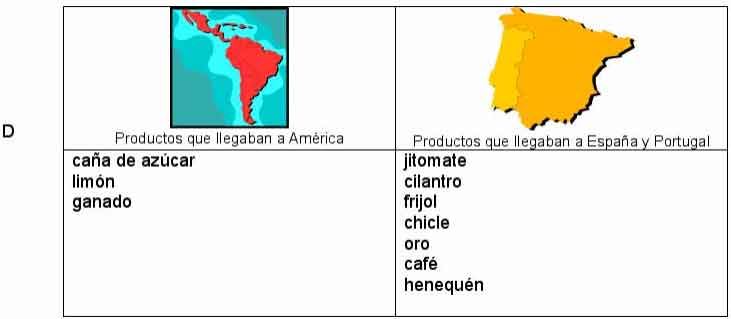
Handout 2

